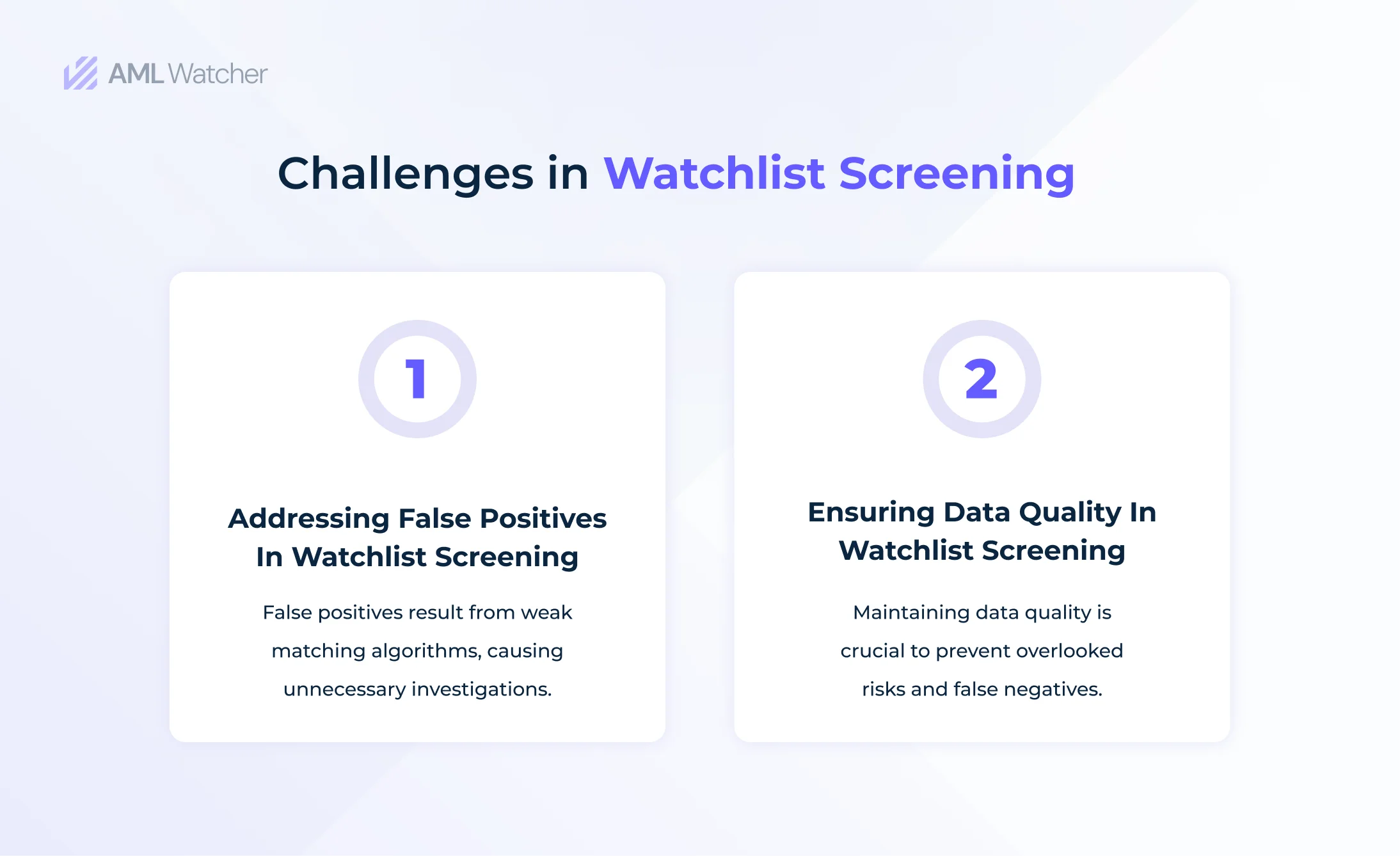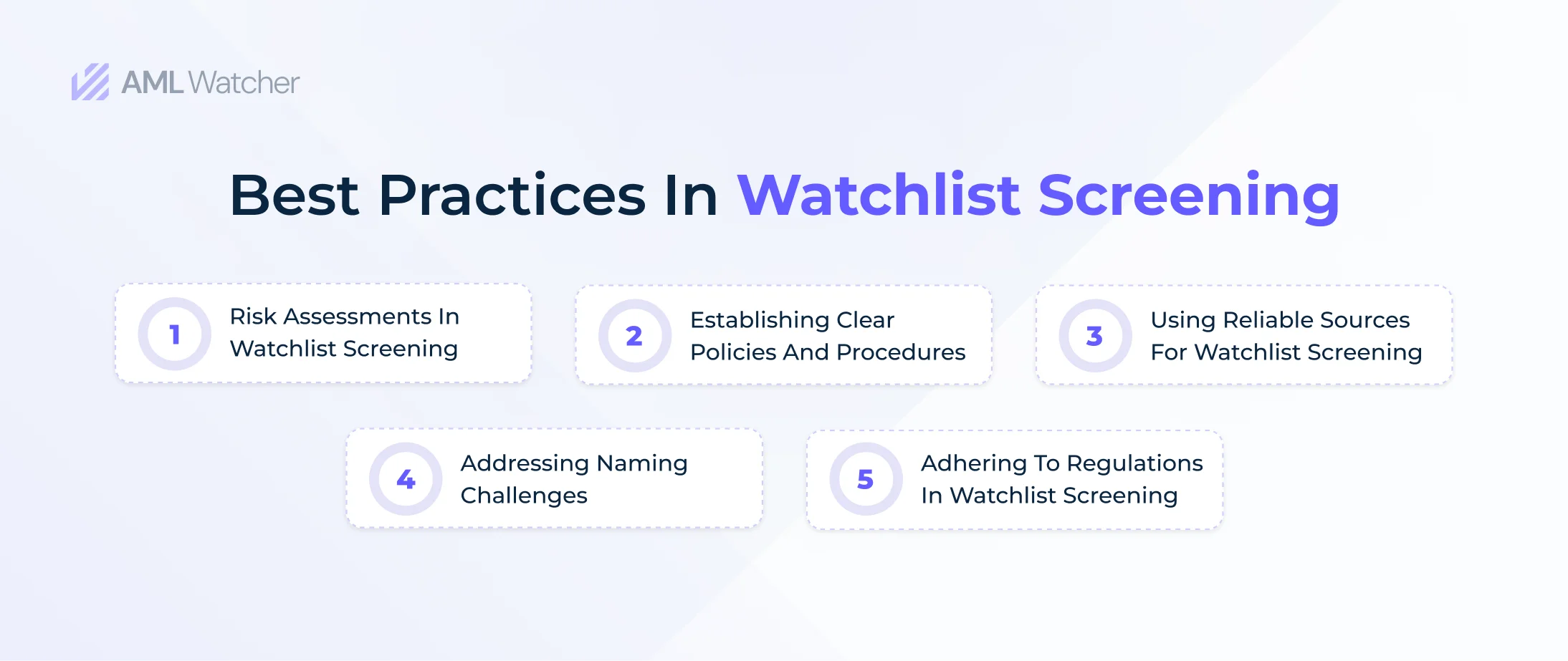
The Dynamics of Watchlist Screening for Risk Management

Enterprises’ net worth is determined by the assets that they own which makes it extremely imperative for them to safeguard it even if it requires spending them on systems that cost a lot. These assets do not only include the monetary assets but the physical ones too. Additionally, the sensitive data that the companies possess is regarded as assets too. Hence, to retain reliability in operations, adherence to compliance, and keeping up with credibility, companies spend to integrate AML systems. This is especially vital as security concerns get more complicated, with key assets being handled across different clouds, premises equipment, and multiplatform apps. The security dangers are significant, since the expense of an accurate endpoint attack now surpasses $5 million, and corporate system breaches have more than doubled in the five years prior to this year.
This procedure relies heavily on watchlist screening. It matches persons and companies to databases that include the identities of terrorists, criminals, and individuals who are on sanctions lists. This process is critical throughout client onboarding and prior to transactions, demonstrating potential dangers and assisting with AML compliance, thus serving to stop the supplying of funds to illegal activities such as scams, terrorism, and cyber-attacks, and guaranteeing the security and integrity of critical assets in an elaborate global security environment.
Now let us understand what watchlist screening exactly is before we can learn how it is used for risk management.
Understanding Watchlist Screening
The whole idea of maintaining watchlists is to match the individuals or entities being onboarded or with whom the organizations want to have business ties, against a list that contains proven criminals, terrorists, or the perpetrators of fraud. It should be ensured that the watchlists are updated in real-time so that there remains no shadow of doubt that the individuals with whom dealings are done or who are onboarded are in any way fraudsters or criminals. Additionally, Very well-known banks and financial institutes have incurred heavy penalties just because they failed to abide by the watchlists. To illustrate this let’s take the example of UniCredit Bank AG. It allowed the processing of the payments of those individuals who were either sanctioned or belonged to sanctioned countries. This oversight led to a hefty penalty of over $1.3 billion. This is just one example that signifies that corporations can identify criminals with the aid of ongoing watchlist screening.
With this understanding of global watchlist screening, let’s understand what various advantages sanctions and watchlist programs offer.
Benefits of Watchlist Screening
There are numerous advantages that watchlist screening provides for fraud prevention and that is the reason why organizations are eager to integrate it into their AML compliance systems to make sure they do not become allies or partners with proven identities involved in fraudulent activities. With the aid of methodical matching of persons and companies against extensive databases containing recognized threats or individuals who are proven guilty of crime, it serves a critical role in avoiding financial fraud and funding that goes for terrorist activities. Interestingly enough, this method also enhances due diligence dramatically, enabling firms to make well-informed choices before and after onboarding.
Now let’s have a look at a rather interesting and relevant case study that further accentuates the importance of integrating ongoing watchlist screening.
Case Study Highlighting the Benefits of Successful Watchlist Screening:
Standard Chartered Bank found itself in a huge conundrum after an oversight of global watchlist screening where it had to pay a penalty of $1.1 billion. The bank was involved in processing 9500 transactions with an Iranian organization which was sanctioned as per the AML International Emergency Economic Powers Act (IEEPA). It violated the two laws and one-quarter billion dollars were transferred to the organization. This was a direct outcome of weak ongoing watchlist screening. This example is a perfect depiction of how crucial it is for companies to adopt watchlist monitoring services and hedge themselves against the hefty fines that cost a fortune to organizations.
Watchlist screening is a step-by-step process which requires a systematic approach because it deals with highly sensitive data. Let us understand how it is performed.
The Dynamics of Effective Watchlist Screening
A watchlist screening program must be effective and to ensure that adherence to it significantly minimizes fraud, the following steps must be noted.
- Firstly, an up-to-date database must be maintained which is the culmination of data and information from vast and authentic sources. The origin of those sources must essentially be the watchlists from the government, international organizations/bodies, and the private sector because covering these sources will make sure that the data has broad coverage.
- Secondly, to overcome the persistent challenge of false positives, such matching algorithms must be used so that there remains no shadow of uncertainty while the individuals or entities are being matched against the watchlists.
- Thirdly, a comprehensive risk assessment of individuals being onboarded will ensure that what level of scrutiny and matches must be performed.
- Finally, a watchlist screening service that is devoid of any actionable plan is ineffective. Hence, it’s imperative that ongoing watchlist screening comes with a plan that allows the institutes to take action or conduct further investigations once the fraudster has been detected. This means there should be a well-defined reporting system.
Ensuring the accuracy, relevance, and timeliness of data is crucial for the effectiveness of the screening process. The challenges mentioned below require careful balance and continuous refinement of screening processes and technologies to maintain efficacy and efficiency. Let’s understand what those are.
Challenges in Watchlist Screening
Managing False Positives:
Ongoing watchlist screening is not free of limitations. It comes with one critical challenge of giving false positive alerts. It may happen that the system mistakenly flags the authentic or innocent individuals as suspicious entities or criminals. This triggers unnecessary investigation, leading to a waste of resources like time and money. This majorly is the outcome of a weak matching algorithm in place.
Managing Data Quality:
Apart from having false positives, compromised quality of data is another concern. When watchlists are out of current or incomplete, the data quality suffers. As a result, inaccurate evaluations are made and risks are overlooked. Furthermore, matching algorithms at times fail to reckon numerous names inside records, particularly when names are not in the specified name field, as in the case of joint accounts, or when extra names are concealed in other areas such as the address field. Furthermore, another grave issue arises when insufficient data, anomalies, and the existence of unwanted noise words might result in false negatives, in which possible threats go completely undetected. Hence, Profiling, cleaning, and harmonizing data will serve as problem solvers and enable reduced alerts of false positives and negatives.
Organizations employ the following solutions or best practices to overcome the challenges above embedded in watchlist screening procedures.
Best Practices
Risk Assessments:
The two persistent and major problems in global watchlist screening that we previously discussed i.e. false positives and poor data quality are addressed by performing a thorough risk assessment. This is essentially done by giving preference to factors like the number and the amount of transactions, as well as the overall profiles of the customers. This is also best emphasized by the Wolfsberg Group in identifying and assessing sanctions risks. This includes assessing multiple risks like customer risk, product risk, and jurisdiction risk.
Establishing Clear Policies and Procedures:
Additionally, establishing clear policies and procedures has always been inherently important for the purpose of effective screening and false alert handling. The Wolfsberg Group has yet again put greater emphasis on the fact that the foundation building of a Financial Crime Compliance program should necessarily encompass well-defined policies and procedures for the aforementioned reasons.
Using Reliable Sources:
Furthermore, another important best practice demands the use of reliable sources for updated sanction lists because this further helps ensure internal controls. Since the ability of the sanctions list to be modified or forged, gauging how accurate the lists are is equally crucial. This puts a greater responsibility on the institutions to be diligent in making sure that no forgery has been done before the lists are uploaded/integrated into the systems.
Addressing Naming Challenges:
Moreover, in various cultures, the variety challenge of names remains a persistent issue which prompts continuous monitoring and periodic review of client profiles for the sake of enhancing accuracy. This is because the challenges in names impact how the individuals are identified across cultures. Inaccurate handling of names can lead to misidentification and data integrity issues.
Adhering to Regulations:
Last but not least, in order to ensure that the system is fully compliant, practices like training, maintaining records, and adherence to regulations go unbeatable in doing so.
Concluding Thoughts
As the digital world is expanding, the assets of the companies which do not only include the monetary and physical assets but the highly critical and sensitive data and information as well, is becoming easily accessible on various platforms. This ease of access leads to an easy breach and chances of crime, hence undermining the security systems and the integrity of the organizations. This is where watchlist screening comes into play with its ability to match the individuals or entities with the lists that contain those individuals who are proven guilty of some crime. This greatly ensures that the AML laws are not only adhered to but illegal activities from within the organizations are nearly annihilated. This is further reinforced by the examples of some renowned banks and financial institutions like Standard Chartered Bank and UniCredit Bank AG which suffered from heavy fines and reputational damages because of their oversight in adhering to ongoing watchlist screening. Although this tool has made it certain that proven criminals and fraudsters would be barred from any engagement as stakeholders, it’s not without limitations. Data quality and false positives to date remain the major conundrums that AML Watcher attempts to overcome with its advanced algorithms, updated databases, a thorough risk assessment, and very clearly laid out policies to bring a surge in accuracy.
Contact us if you want to implement stronger global watchlist screening procedures to protect vital assets that span physical infrastructure to highly sensitive information.
Related Articles
We are here to consult you
Switch to AML Watcher today and reduce your current AML cost by 50% - no questions asked.
- Find right product and pricing for your business
- Get your current solution provider audit & minimise your changeover risk
- Gain expert insights with quick response time to your queries
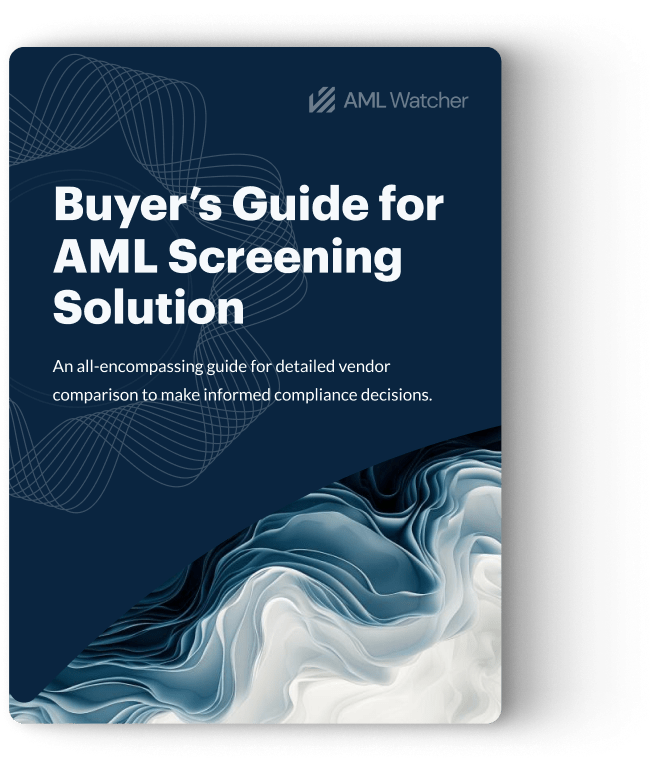
 Compliance Guidelines: Canada
Compliance Guidelines: Canada
 Compliance Guidelines: Australia
Compliance Guidelines: Australia
 Australia’s AML/CFT Law Tranche2 Expanding Compliance Requirement
Australia’s AML/CFT Law Tranche2 Expanding Compliance Requirement
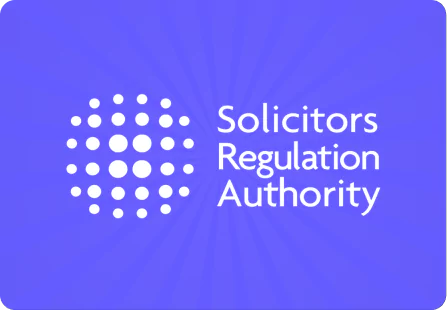 SRA Announces New AML Regulations for Legal Professionals
SRA Announces New AML Regulations for Legal Professionals

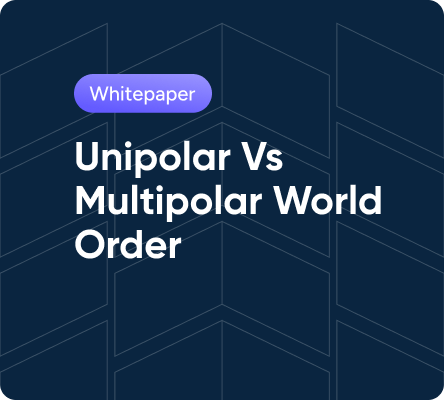
 Why Should states conduct AML Due Diligence for CBI/RBI Investment Schemes?
Why Should states conduct AML Due Diligence for CBI/RBI Investment Schemes?
 How can businesses comply with US sanctions on vessels?
How can businesses comply with US sanctions on vessels?
 Current Use Cases of AI Technology in the AML Compliance
Current Use Cases of AI Technology in the AML Compliance
 How Cyber Security Threats impact AML and Fraud?
How Cyber Security Threats impact AML and Fraud?
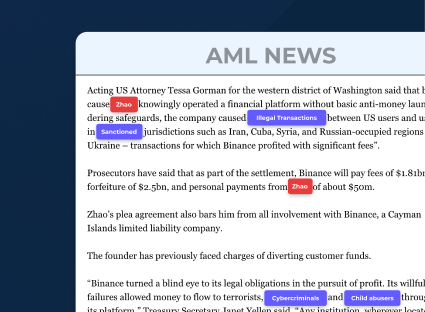 5 Keyword Search Challenges in Negative News Screening
5 Keyword Search Challenges in Negative News Screening
 6 Best Practices For Efficient PEP Screening
6 Best Practices For Efficient PEP Screening

